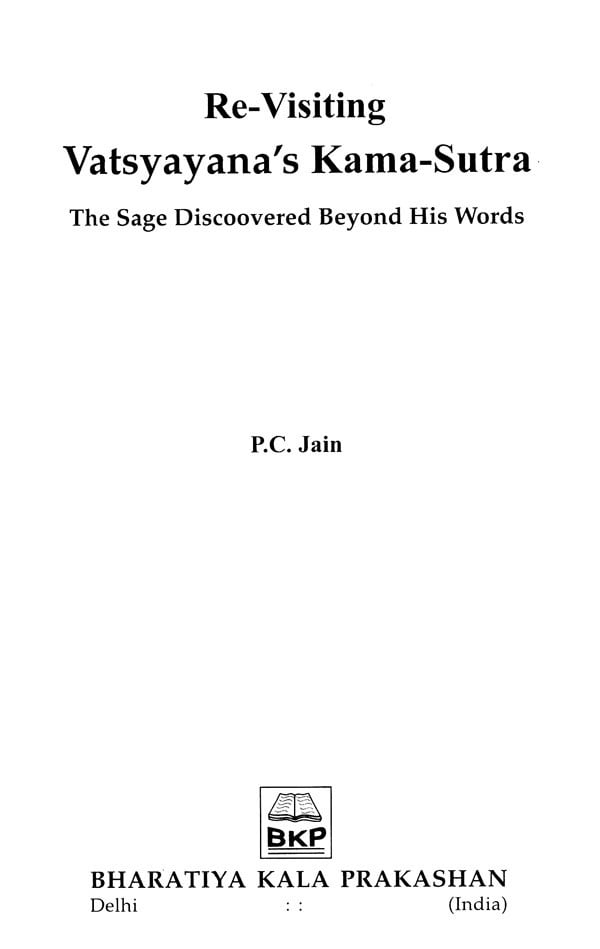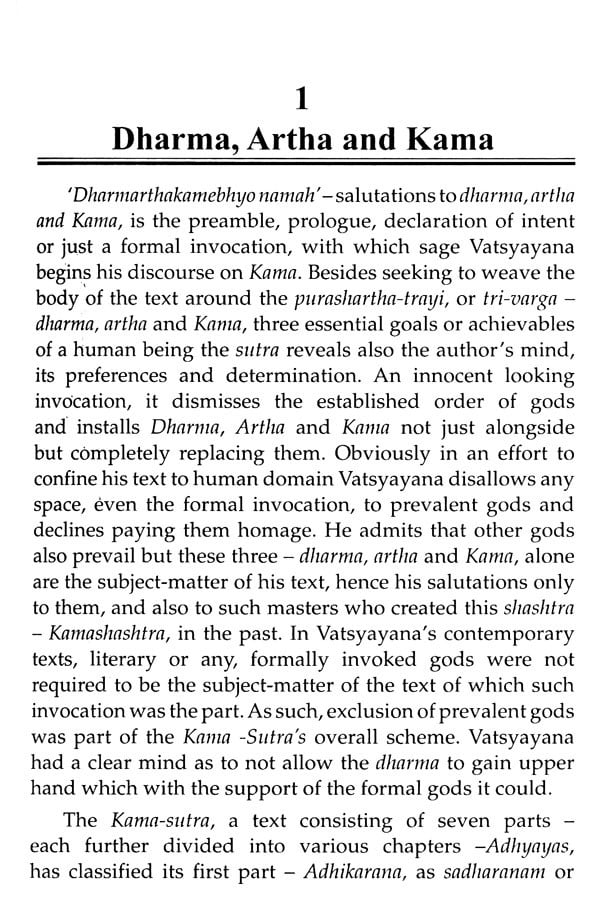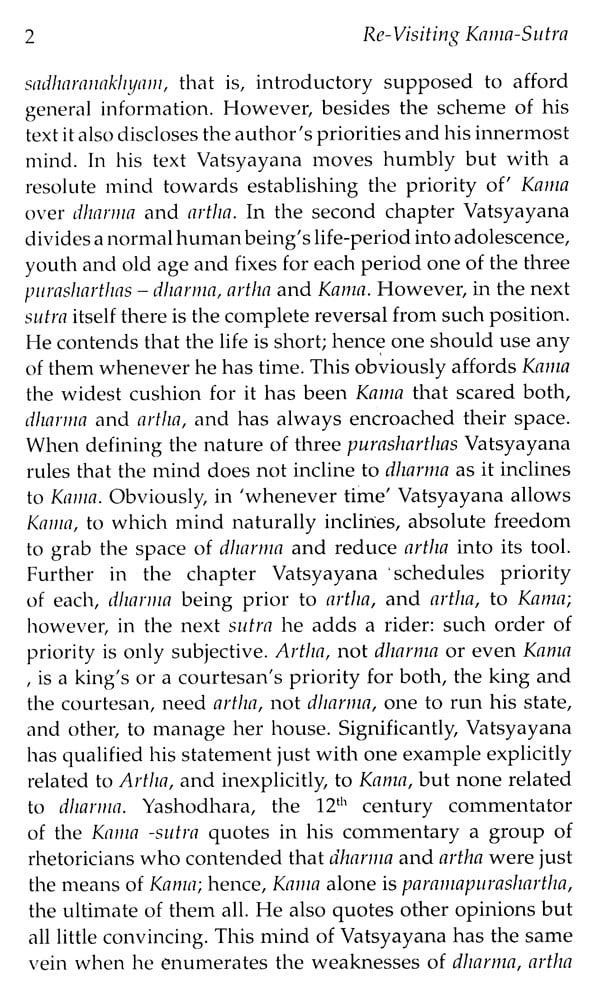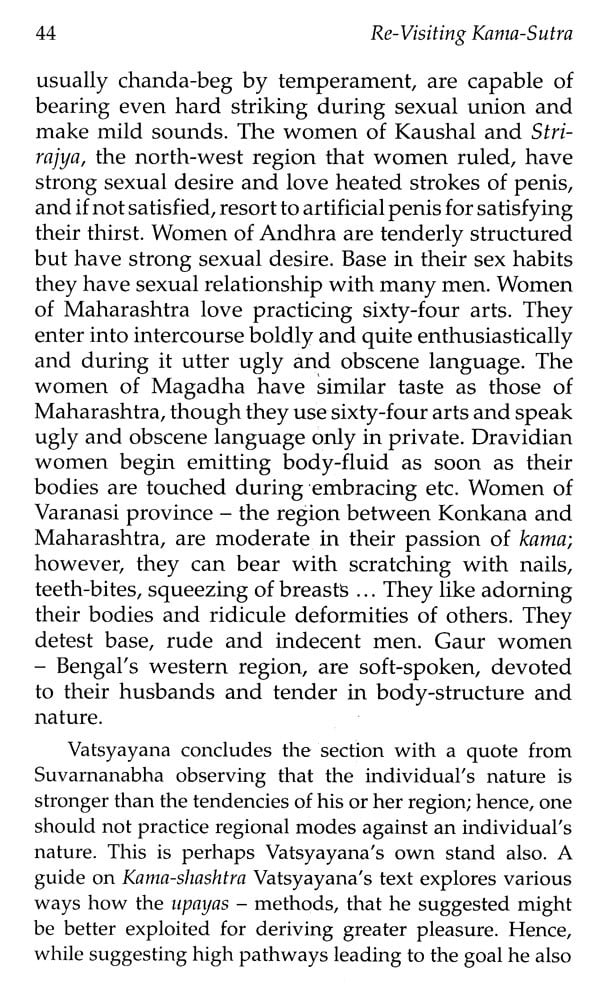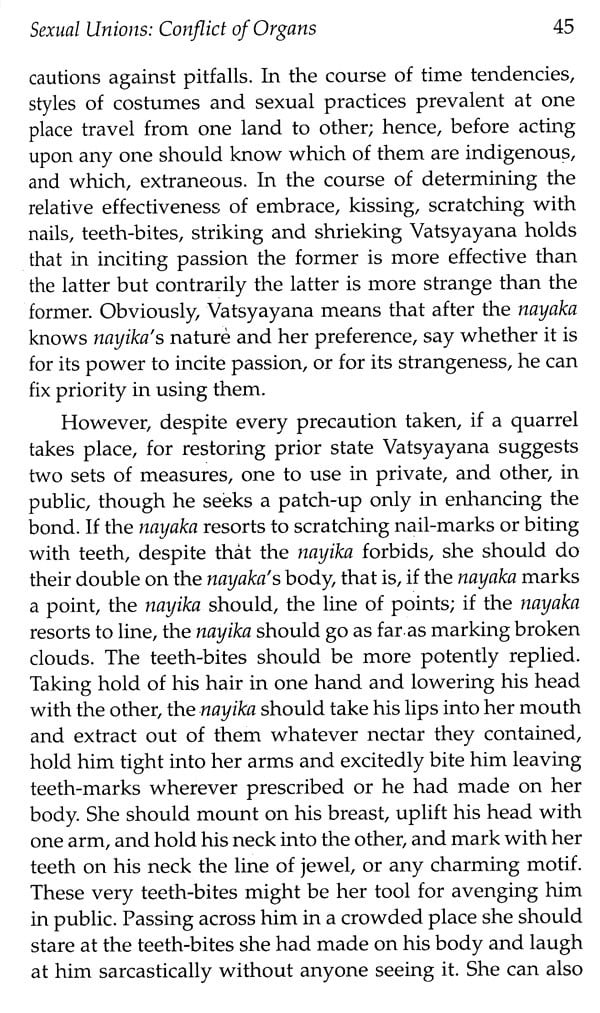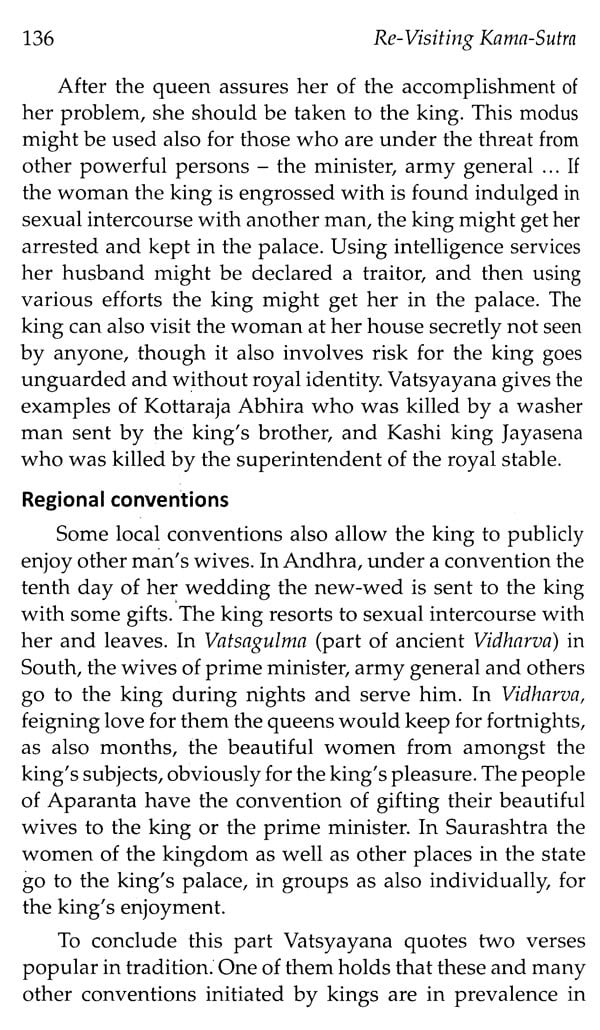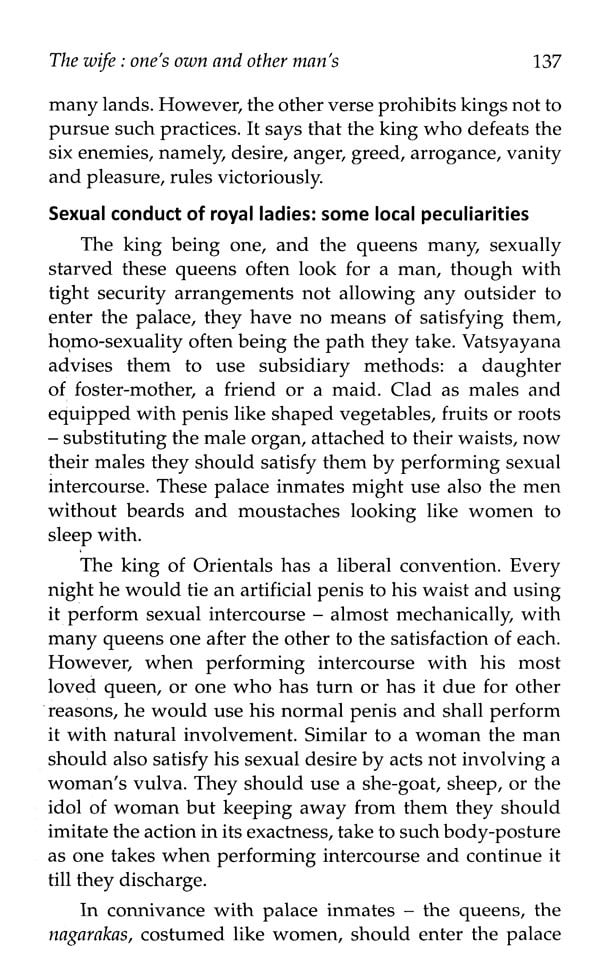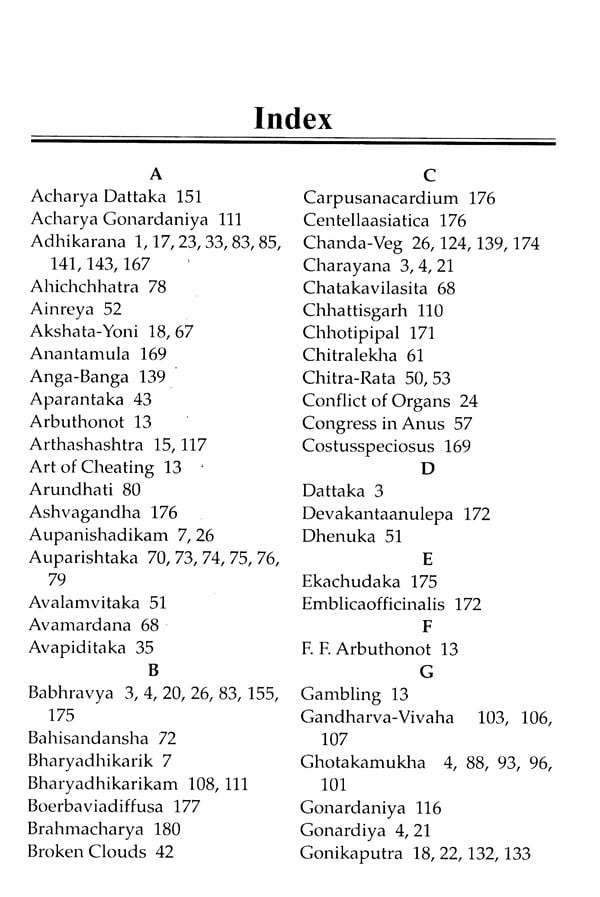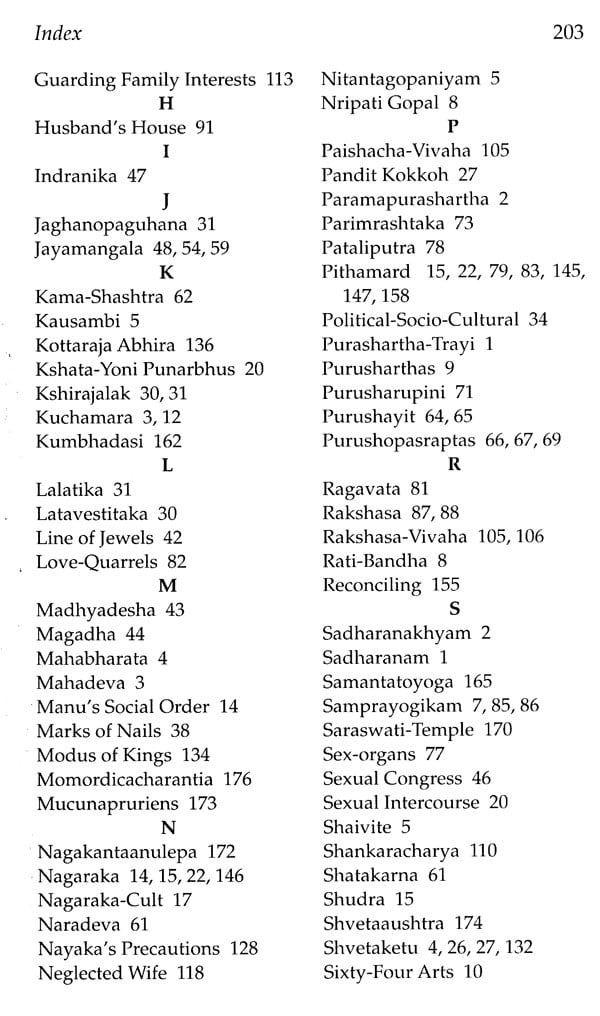About the Book A versatile writer P C Jain has contributed on subjects like Hindi grammar, philately, Tantra, folk and tribal art, monuments, painting, textile, cultural history and subjects like Kama-shashtra A clay modellar, a painter, poet, embroiderer, weaver, even a teacher finds in his writings something relevant. He chooses a medium from around him and it is in his ability to use it that determines his artistic accomplishment and talent. Whichever the medium PC Jain has attempted in his writings the level of such accomplishment and therein lies his distinction.
About the Author Revisiting Kama-sutra discovers what sage Vatsyayana said, meant or wanted to say, as also the issues of contemporary mind for remedying which this mind looks to Vatsyayana and his Kama-sutra. Though after these two thousand years of confrontation kama-shashtra has now gathered around a mass of controversies, in the third century when Vatsyayana chose kama for his treatise the entire Hindu tradition celebrated kama as one of the three goals of life, the other two being Artha and Dharma. In its foremost cardinal of negation of kama, even Jainism had accepted the strength of kama, and Buddhism, in allowing school of female monks, the kama as a reality of being.
In the Kama-sutra Vatsyayana invokes kama along artha and dharma deities-like. An acharya in authority Vatsyayana does not accept such cardinals of Dharma shashtra as are contrary to kama, that is, accomplishment of kama is as essential to a human being as earning artha or observing dharma. In his classification of Nagaraka he ignores Dharma-shashtras varna classification. His views on woman: her apprehension of shashtra, ability to run or manage family business, her right to seek sexual satisfaction, her share in her husband’s property, mans responsibilities towards his wife or even a courtesan having purer feelings, or issues such as homo-sexuality are far different from those of Dharma-shashtra or Artha-shashtra.
Introductory Unlike conventionalized reproductions of the Kama sutra: the same aphoristic style each verse unlinked with other, and a formal diction as used a Vedic teacher when discoursing with his disciples sitting around, the Re-visiting Kama-sutra attempt at discovering the text's essential spirit as also its inherent unity that transforms it into a compact thesis. While re-structuring the manifest body of the Vatsyayana's great classic the Re-visiting Kama sutra encounters with absolute honesty and straightway not only Vatsyayana's statement but also the man behind it. Re-visiting Kama-sutra also investigates the circumstances of Vatsyayana's life, his times, challenges, pressures, concessions and submissions as also his revolt, sometimes silent but often louder than the spoken words. Whatever the Re-visiting Kama-sutra contends emanates from behind Vatsyayana's own words, not thrust upon from sources outside it. The Re-visiting Kama-sutra addresses that essential mind, that is, today's reader, the Kama-sutra has been reproduced for. On one hand it decodes Vatsyayana's aphorism, and on the other, simplifies abstruseness of his ancient diction and makes thus an honest effort to discover in his ancient classic solution to a contemporary reader's needs-broadly this underlines the text's relevance today.
Whatever Vatsyayana's pressures or compromises, his main objective in the Kama-sutra was to regain for kama its earlier prestige that as one of the three purusharthas-goals of life, kama once had.
**Contents and Sample Pages**
